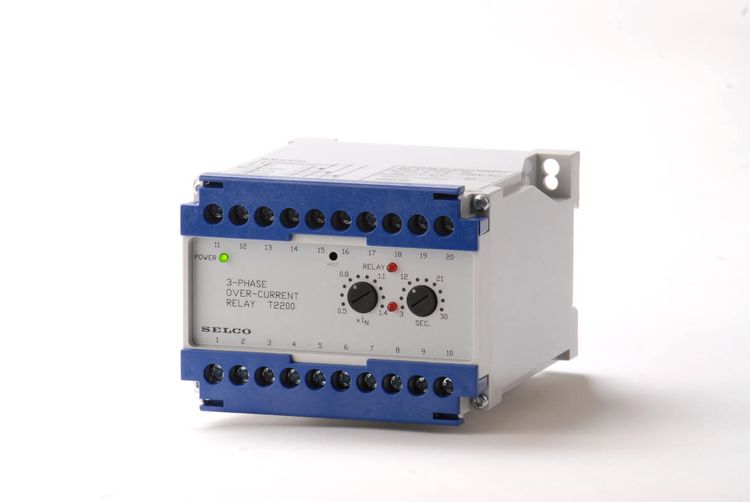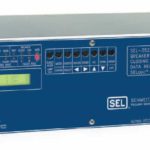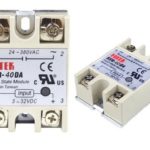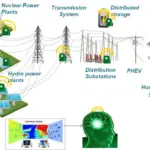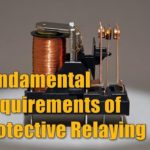The use of overcurrent relays is the simplest and cheapest type of line protection. Three types of overcurrent relays are used:
- Inverse time delay overcurrent (TDOC) relays,
- Instantaneous overcurrent relays,
- Directional overcurrent relays.
In general, overcurrent relays are difficult to implement where coordination, selectivity, and speed are important. They usually require changes to their settings as the system configuration changes.
Also, they cannot discriminate between load and fault currents. Hence, when they are implemented only for phase fault protection, they are only useful when the minimum fault current exceeds the full load current.
However, they can effectively be used on subtransmission systems and radial distribution systems. This is due to the fact that faults on these systems usually do not affect system stability and therefore high-speed protection is not needed.
Inverse Time Delay Overcurrent Relays
The main use of TDOC relays is on a radial system where they are used for both phase and ground
protection. Basic complements of such relays are two phase and one ground relays.
This can protect the line for all combinations of phase and ground faults using the minimum number of relays.
According to Horowitz, adding a third phase relay can provide complete backup protection, having two relays for every type of fault, and is the preferred practice.
These relays are usually applied on subtransmission lines and industrial systems due to the low cost involved.
Instantaneous Overcurrent Relays
Since the closer the fault is to the source, the greater the fault current magnitude but the longer the
tripping time, the TDOC relay cannot be used all by itself.
As shown in the figure, the addition of an instantaneous overcurrent relay makes such system of protection possible.
However, there must be considerable reduction in fault current as the fault moves from the relay toward the far end of the line. In this manner, the instantaneous relay can be made to see almost up to, but not including, the next bus.
The relay will not operate for faults beyond the end of the line but still provide high-speed protection for most of the line.
Directional Overcurrent Relays
When it is important to limit tripping for faults in only one direction in multiple-source circuits, the
use of directional overcurrent relays becomes necessary.
The overcurrent relaying is made directional to provide relay coordination between all the relays that can see a given fault. Otherwise, the coordination is often too difficult if not impossible.
The directional relays require two inputs that are the operating current and a reference(or polarizing) quantity that does not change with fault location. For phase relays, the polarizing quantity is the system voltage at the relay location.
For ground directional reference, the zero-sequence voltage (3Va₀ ) is used. However, it is often that the current in the neutral of a wye-connected/delta power transformer is used as a directional reference instead.
